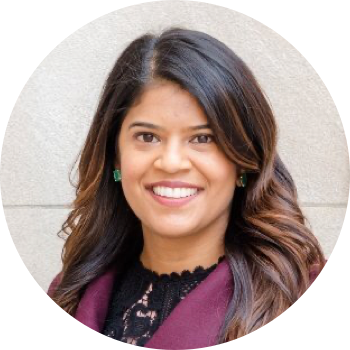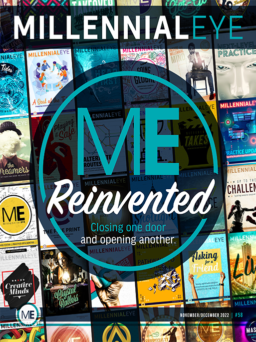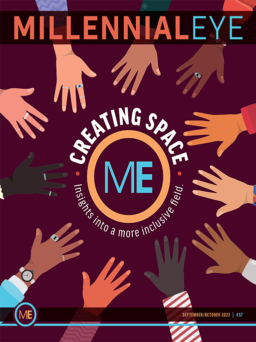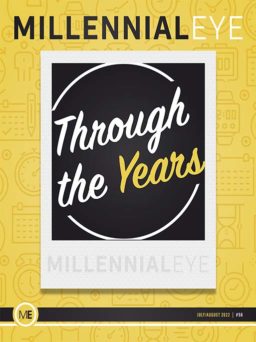
Dr. Patel is an Associate Professor of Ophthalmology at Emory University in Atlanta.
Please share with us your background.
I was born and raised in Nashville, Tennessee, where I attended Vanderbilt University for my undergraduate and medical school education. My dad suffered with scleritis when I was young. Accompanying him to his visits, I had early exposure to ophthalmology and its impact on patient lives. I was grateful to have matched at Emory for my residency, gaining exposure to a wide breadth and depth of pathology in a diverse patient population. I went to California for a fellowship in medical retina and uveitis at the University of Southern California and Doheny Eye Institute. After fellowship, I returned to Atlanta to join Emory’s faculty, where I have been working for the past 10 years at the university hospital and the Atlanta VA Medical Center, specializing in medical retina, uveitis, and cataract surgery.
What is the main focus of your efforts outside of clinical care?
My main forte outside of clinical care has been organizational development and education. I work closely with the AAO, Women in Ophthalmology (WIO), and the Georgia Society of Ophthalmology. Through these partnerships, I have been able to focus on the mentorship of undergraduate students, medical students, and residents, both nationally and internationally, and I have found this experience to be incredibly rewarding and energizing.
What has your experience been collaborating with industry?
The relationship between industry and physicians has evolved throughout my career. When I started out in training, my fellow residents and I had direct involvement with industry representatives. It was a great partnership. Industry representatives provided educational programming for us, including professional development sessions, and they helped us procure drugs for patients who were financially challenged.
Having trained in that setting, it was challenging to then navigate the increasingly regulated physician-industry landscape that developed over time. I certainly understand the background behind some of the changes that occurred; however, I have also seen firsthand how partnering with industry colleagues contributes to professional development and especially career development for younger ophthalmologists. In my experience, these physician-industry relationships are both necessary and synergistic.
In your opinion, how is the role of women in ophthalmology evolving?
It has been rewarding to see not only more women in ophthalmology in general but more women in ophthalmology embracing their authenticity. Women are demonstrating greater comfort being transparent about their personal lives and disclosing how some aspects—being the primary caregiver, for example—may affect their professional lives. Personally, I have enjoyed seeing more women start their own practices, assume the role of decision maker, and not have to navigate around some of the traditional workplace nuances. It is an empowering time. Before WIO was founded, we were relegated to a culture of scarcity, in which it felt like there wasn’t room for more women to excel. I think that WIO has set a new tone for our field by encouraging women to support one another and thrive together.
What hurdles do you feel women in health care still face?
Overall, the situation has evolved, but challenges remain, and some substantial infrastructural changes must still take place. Childbearing, for one, can be difficult for women in health care to navigate and is often not talked about enough. Women physicians face a higher rate of infertility than the general population, yet education on the topic is missing from medical school curricula. Additionally, a more proactive approach to parental leave is needed for both female and male physicians, where there is a clear plan in place from the start. Initiatives like this support parents in their decision to have children when it is best for them and without undue involvement from others in the training or workplace environments.
I would love to see more of these efforts translate into ophthalmic workplaces. In retina specifically, there exist super groups that include multiple providers but few or no women. How is a female physician supposed to walk into that environment and feel like she can thrive? These groups are wanting to attract the increasing number of women in retina. We need more education on both sides on how to do this better so that both parties succeed. If plans and policies around parental leave are established in advance, then prospective female employees are less likely to feel intimidated about joining the practice and more likely to view the environment as a place where they can thrive, not just survive.
What advice can you offer to young female ophthalmologists who are still in training or just beginning their careers?
Ophthalmology is a rewarding field and an amazing community. We have some of the best patients and some of the best colleagues. I have been overjoyed by how forthcoming people have been in mentoring me and lending their time and expertise, especially as I transition to opening my own practice. My impression is that this kindness and helpfulness is unique to our specialty.
With that in mind, one point of advice I’d offer to younger ophthalmologists is to be proactive when it comes to forming mentor-mentee relationships. There are so many people in ophthalmology who are ready to help, but making these connections requires some initiative.
Can you propose a unique or creative idea that may help women in ophthalmic practices?
I am actively involved with diversity, equity, and inclusion (DEI) work, which has become a more central focus in university settings. However, there are far more ophthalmologists in private practice than in academia. We need more education on the why behind DEI work. Ophthalmologists, staff, trainees and patients need to know that diverse teams lead to better solutions, especially for complex problems. A successful workplace should be an environment in which staff members and patients thrive. It is not just about maintaining the status quo but about making people feel comfortable. This topic has come up frequently in conversations about vaccination and the role that relationships and trust play in that setting. If we create environments in which both staff members and patients feel accepted and understood, the net effect will be great for our entire field.
The importance of diversity, equity, and inclusion in the workplace environment must be a topic of discussion. A successful workplace should be an environment in which staff members and patients thrive. It is not just about maintaining the status quo but about making people feel comfortable. This topic has come up frequently in conversations about vaccination and the role that relationships and trust play in that setting. If we create environments in which both staff members and patients feel accepted and understood, the net effect will be great for our entire field.
PUBLISHED WORKS
• Meyer BI, Berry DE, Cribbs BE, et al. Outcomes of infectious endophthalmitis in patients with systemic antibiotic allergies to penicillins, cephalosporins, or vancomycin. Ophthalmol Retina. 2020;S2468-6530(20):30466-30468.
• Hanif AM, Shah R, Yan J, et al. Strength of association between pentosan polysulfate and a novel maculopathy. Ophthalmology. 2019;126(10):1464-1466.
• Angeles-Han ST, Yeh S, Patel P, et al. Discovery of tear biomarkers in children with chronic non-infectious anterior uveitis: a pilot study. J Ophthalmic Inflamm Infect. 2018;8(1):17.
• Shantha JG, Ho VY, Patel P, Forooghian F, Yeh S. Choroidal neovascularization associated with birdshot chorioretinopathy. Ophthalmic Surg Laser Imaging Retina. 2016;47(5):450-457.
• Christiansen SM, Oetting TA, Herz NL, et al. Twitter at the 2014 and 2015 annual meeting of the American Academy of Ophthalmology. Ophthalmology. 2016;123(8):1835-1837.
• Maa AY, Evans C, DeLaune WR, Patel PS, Lynch MG. A novel tele-eye protocol for ocular disease detection and access to eye care services. Telemed J E Health. 2014;20(4):318-323.
PROFESSIONAL SOCIETY MEMBERSHIPS
• American Academy of Ophthalmology (AAO)
• Women in Ophthalmology (WIO), Treasurer
• American Medical Association (AMA)
HONORS & AWARDS
• Editor-in-Chief, AAO Ophthalmic News and Education Network
• Chair, Young Ophthalmologist Committee, American Academy of Ophthalmology | 2014
• Secretariat Award, American Academy of Ophthalmology | 2014





